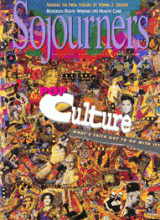The most successful method of resistance among the Maya in Mexico and Central America from the time of the Spanish conquest in the 15th century has been the transmission of religious and cultural traditions by generations of Mayan mothers to their children. This is resistance over the long haul-and we continue to see the fruits of it today.
A cultural ecology is created day by day; our level of intentionality in this creation determines how close our daily lives come to being art. Among Chicanos' Mesoamerican ancestors, art had both an aesthetic and functional value. Remembering this, we can make every act of our daily life a work of art: Cooking a meal, beautifying our surroundings (including doing the housecleaning!), and recounting the events of the day to a loved one can all become artistic acts. Each of us must continually pull up the stakes and become creators ourselves. This can never be appropriated by the power brokers of the dominant culture.
To control one's culture is power. By defining one's own culture-whether a corrido or claiming your grandmother's sauerkraut and wurst recipe-one becomes empowered to create a new reality-or maintain one that is threatened.
The Aztecs saw the artist as one who mimics divine reality and, in so doing, becomes a link between the invisible spiritual world and the tangible world of flesh and bone. The role of art and culture-in its highest and most common forms-is to reveal God among us.
Read the Full Article

